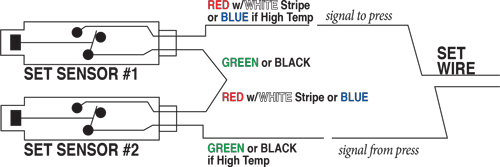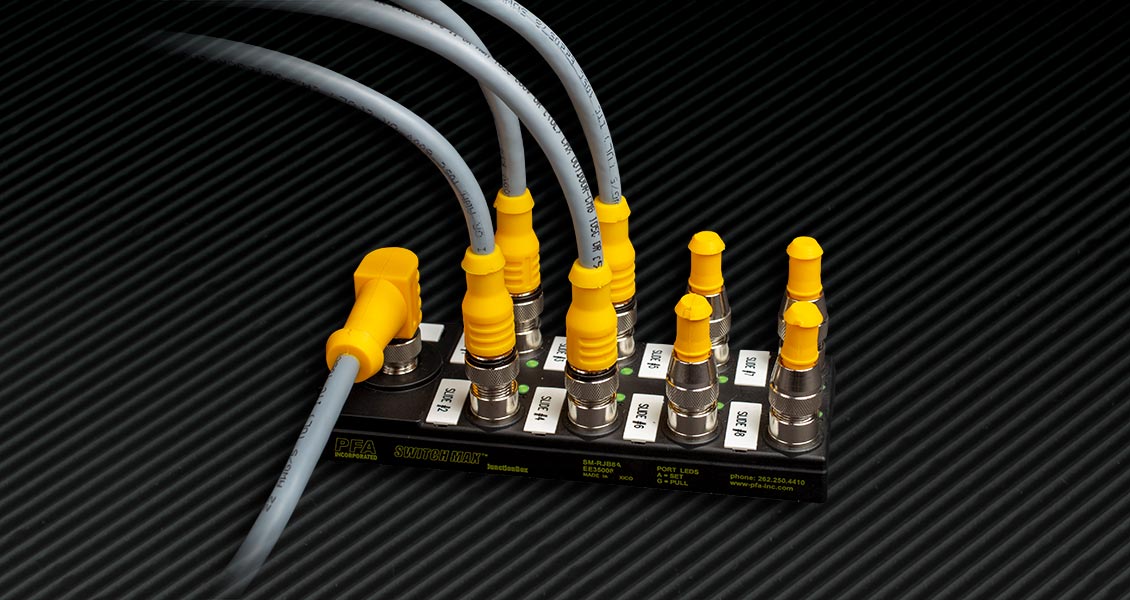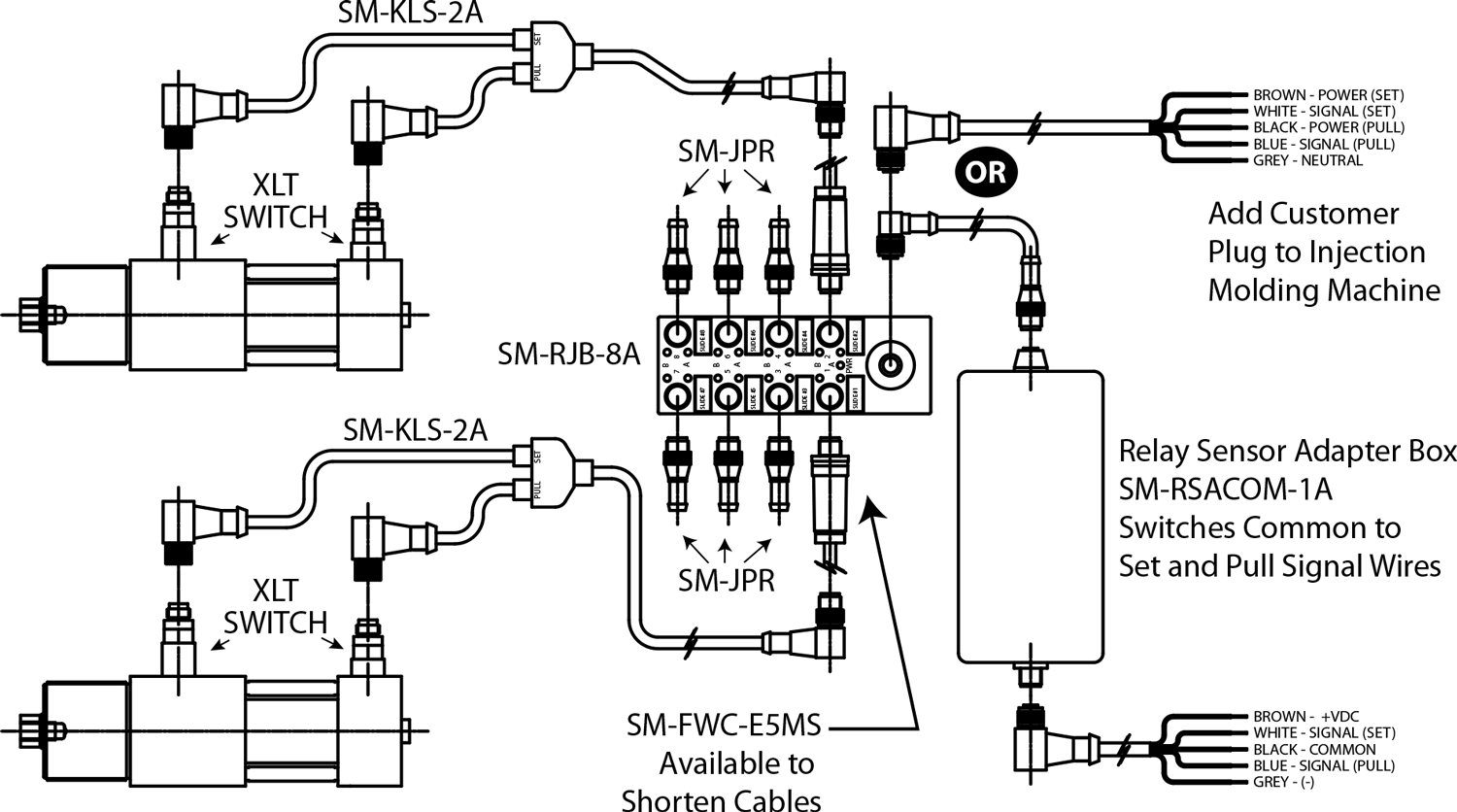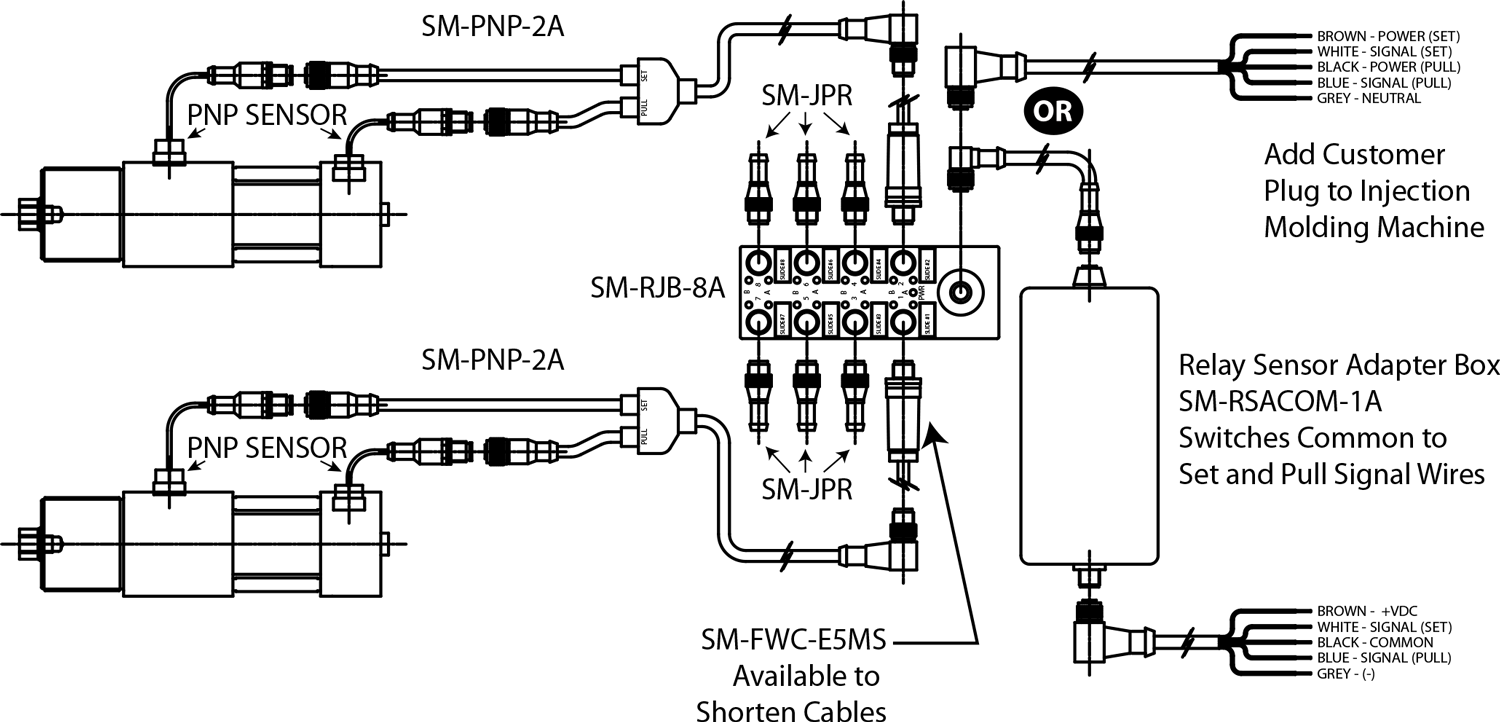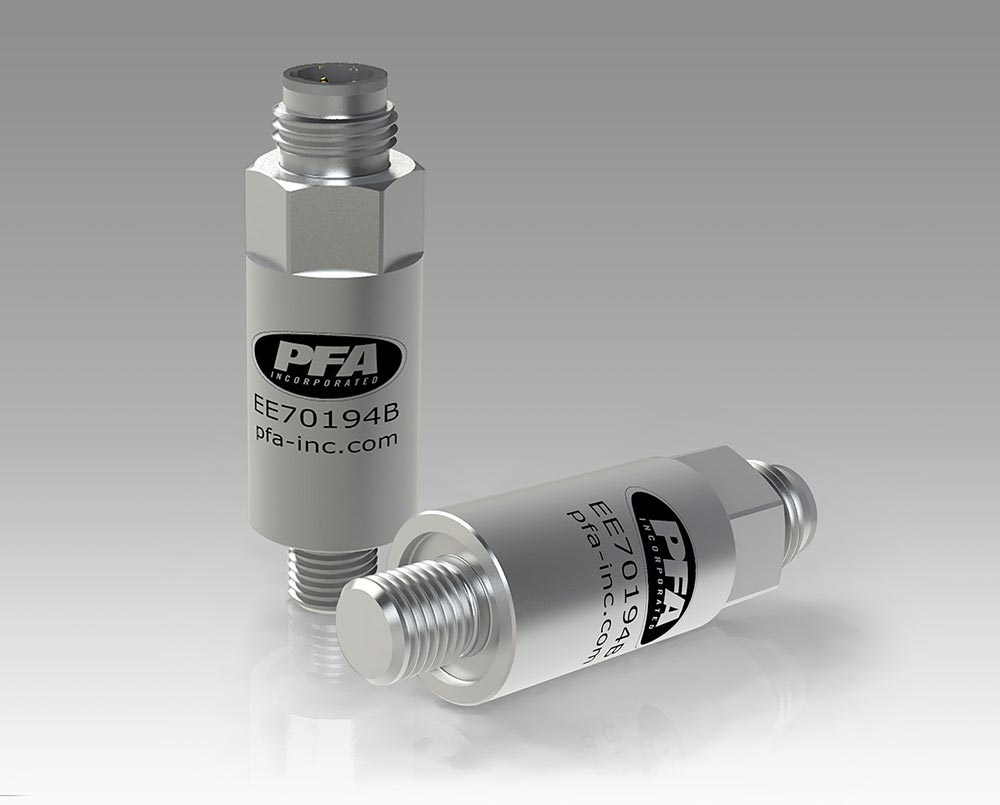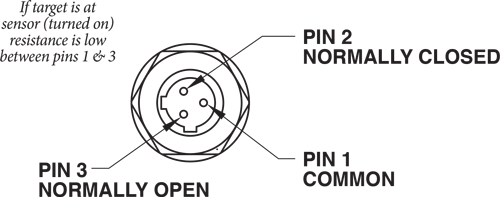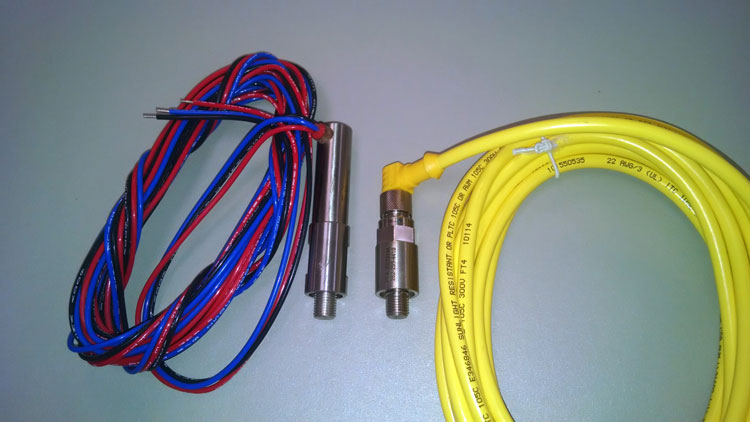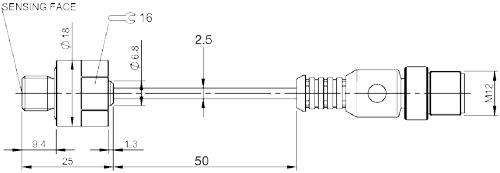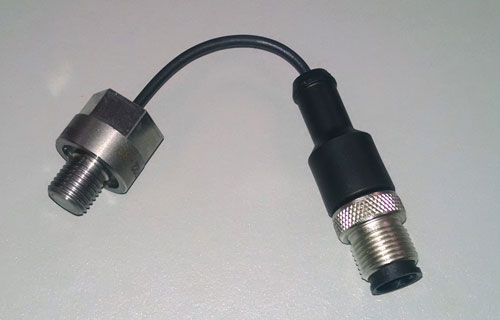Low Profile PNP sensors offer benefits to the user when fitting The KOR-LOK unit into demandingly small applications or when Integrating with other actuators using similar PNP sensor logic. PFA’s PNP option has a low voltage drop, typically allowing multiple sensors to be connected together to facilitate a single input to the machine control. Sensor integration is easily accomplished with PFA’s SWITCHMAX® connectivity solution with PNP designated splitter cables.
In a generic application the Normally Open Sensor is paired with an individual cable to provide power and route the signal. To use the sensors individually, Power +24VDC (Brown wire) and Neutral 0 VDC (Blue wire) is required, as well as some method of integrating the sensor signal (Black wire) to the press. Various schemes are used to accomplish this task for molds with multiple cylinders, however, PFA recommends SWITCHMAX® to provide a plug and play serial connection of sensors into single inputs for set and pull, while also providing operator side indication and troubleshooting capability.
While proper indication is expected, PFA cautions that for situations where a core or other part of the mold may be damaged if opened with cores set, it is recommended that a redundant sensor be placed on the core itself and wired in series with the main unit sensors to ensure the core is retracted prior to mold opening.

